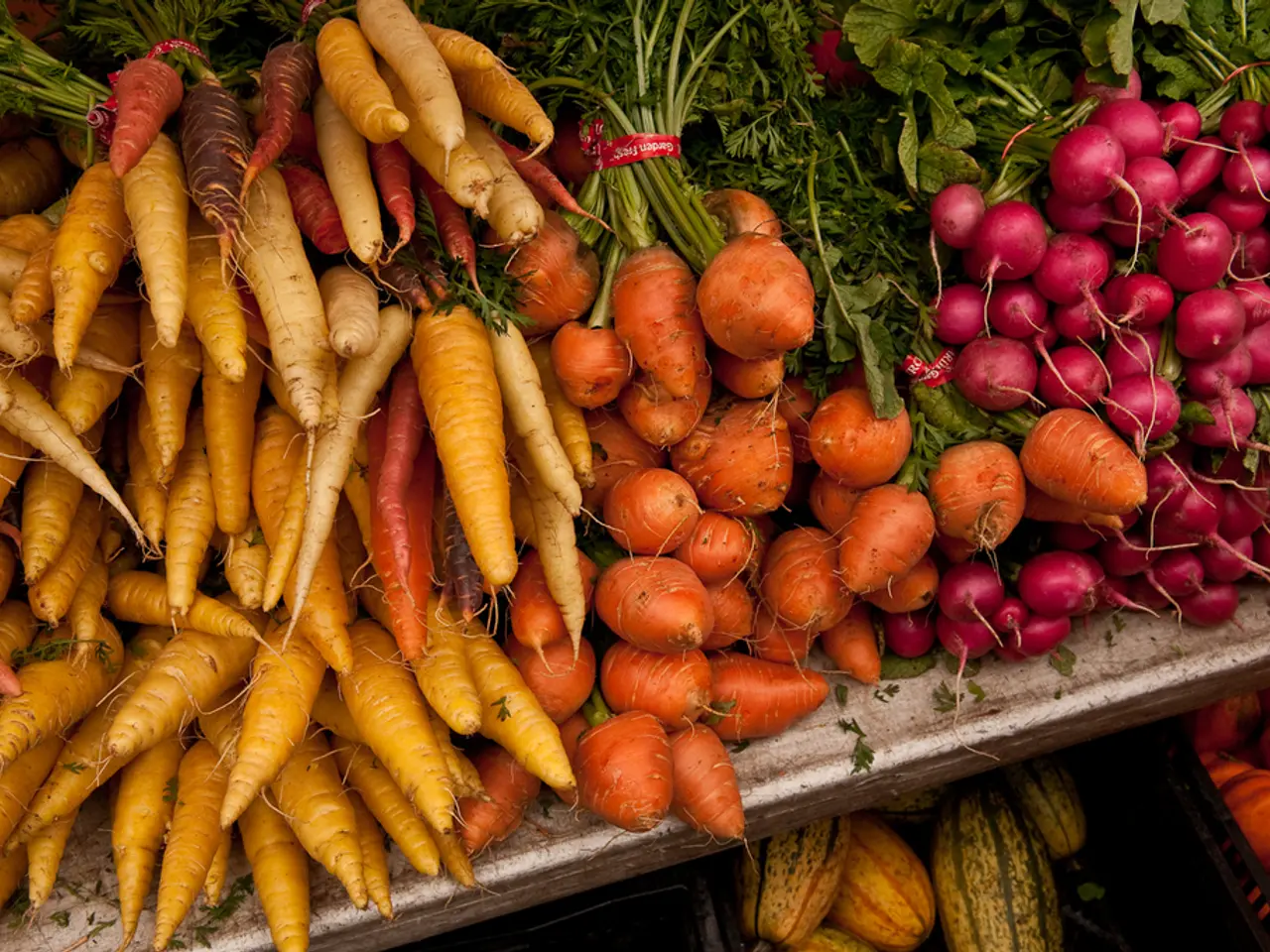Rotating the types of crops grown in a field to improve soil health and productivity
In the world of gardening, maintaining a balanced and thriving vegetable patch is essential for producing healthy plants and bountiful yields. One effective method to achieve this is through a four-year crop rotation plan. This strategy, which involves rotating groups of crops based on their nutrient needs and effects on soil health, can be easily implemented in a vegetable patch or allotment.
Year 1: Legumes
The first year is dedicated to legumes such as beans and peas. These plants are unique because they can fix nitrogen in the soil, enriching it for subsequent crops.
Year 2: Root Vegetables
Moving on to the second year, root vegetables like carrots, beets, and onions take centre stage. They use different nutrients and help break up the soil, preparing it for the next round of crops.
Year 3: Fruiting Vegetables
Year three sees the arrival of fruiting vegetables such as tomatoes, peppers, and cucumbers. These are heavy feeders, requiring more nutrients to thrive.
Year 4: Leafy Greens and Brassicas
Finally, in the fourth year, leafy greens and brassicas like lettuce, cabbage, and kale take advantage of the nutrient balance left by the previous crops.
This rotation helps maintain a healthy balance of soil nutrients, reduces disease build-up, minimises pests, and improves soil structure and fertility.
In addition to this four-year rotation, several key practices can further enhance your garden's health. Start the cycle with a soil test to identify any nutrient deficiencies and amend with organic inputs like blood meal (nitrogen), bone meal (phosphorus), and kelp meal (potassium). Incorporating cover crops or green manures during off-season or between rotations can also help rebuild soil naturally.
It's also crucial to avoid planting the same crop or crop family in the same spot more than once every four years to disrupt pest and disease cycles. This rotation can be adapted to different plot sizes and climates, making it manageable even in small raised beds.
By implementing a four-year crop rotation, gardeners can create healthier plants and improve yields over time. A video guide on crop rotation for a four-year cycle is available for those seeking a visual guide.
Remember, crop rotation is a gardening practice that helps prevent the build-up of pests and diseases specific to a particular family of vegetables. For instance, rotating crops annually can help prevent common problems such as clubroot (brassicas), white rot (onion family), and eelworm (potatoes).
The order of crop rotation for each year in a four-year cycle is rotated clockwise. So, the order is: Potato family, Onion family and roots, Legumes, Brassicas. Crop rotation groups are organised according to cultivation needs, making soil preparation and crop care easier.
While some vegetables like sweetcorn, peas, beans, salads, courgettes, squash, cucumber, and radish do not need crop rotation, they should not be grown in the same spot for many years in succession. On the other hand, vegetables like the onion family, root vegetables, brassicas, and potato family benefit significantly from crop rotation.
In a three-year crop rotation, beds are prepared according to the needs of each crop group in autumn or winter. For example, in a three-year rotation, the order would be: Potato family, Onion family and roots, Brassicas, and then the rotation starts again with the potato family in the fourth year.
In conclusion, a well-planned crop rotation is an essential tool for any gardener seeking to maintain a healthy and productive vegetable patch. By following the guidelines outlined above, you can create a thriving garden that not only provides you with fresh produce but also contributes to a healthier environment.
- Organic gardening practices, such as crop rotation, can be a great addition to one's home-and-garden lifestyle, as they help maintain soil health and reduce disease build-up.
- For successful four-year crop rotation in gardening, it's important to begin with soil preparation, followed by a soil test to identify any nutrient deficiencies, and then amend the soil with organic inputs.
- Incorporating cover crops or green manures during off-season or between rotations is another key practice for gardeners who practice organic gardening, as it helps rebuild the soil naturally and improve its structure and fertility.





